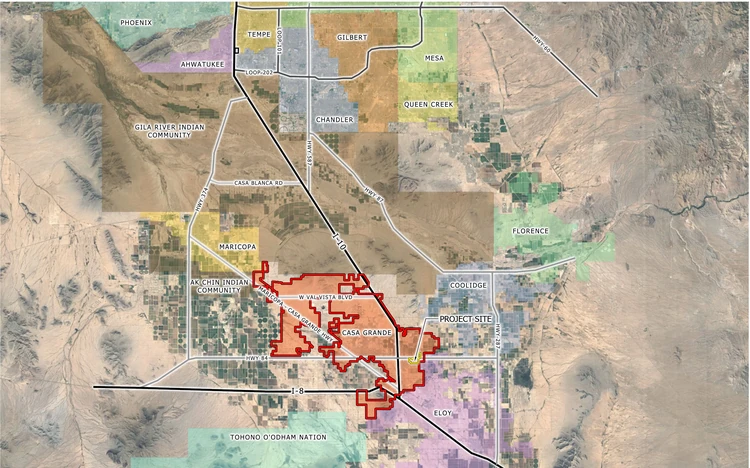
By Chris McCrory | Cronkite News
Richard Bruner loves Lost Dutchman State Park, nestled at the base of the Superstition Mountains.
“Just the beauty of it. It’s amazing out here,” the retired Floridian said after a 5-mile morning walk. “When you get higher up, you can hear the wind blow. When there’s nobody around, there’s no sounds. There’s nothing like that.”
The hiking trails that crisscross the park’s 320 acres have been around for 41 years. To maintain them, the park has received grant money from the Land and Water Conservation Fund.
In Arizona, which relies heavily on tourism dollars to boost its economy, the fund is a windfall for cash-strapped recreational areas, giving more than $830,000 to Lost Dutchman and about $235 million to the state over the past 53 years, according to the Land and Water Conservation Fund Coalition.
But the fund expires Sunday, Sept. 30.
Where the fund stands
Congress established the Land and Water Conservation Fund in 1965. Money from the fund, which comes from the revenue from offshore drilling for oil and natural gas, goes toward such uses as state and national parks, swimming pools and community centers.
Historically, the fund had bipartisan support because taxpayer dollars aren’t used. But because the National Park Service, Bureau of Land Management, the U.S. Forest Service and the U.S. Fish and Wildlife Department can dip into the fund to purchase property, some legislators believe the program gives too much money to federal agencies and not enough to state and local governments.
Rep. Rob Bishop, R-Utah, who chairs the House Natural Resources Committee, is one of those lawmakers. He wrote an op-ed piece in Politico after trying to kill the fund’s reauthorization in 2015, citing “fundamental flaws” in the way the fund operates.
“Because states know best the needs of the people in their communities, the original 1965 law required that states receive the lion’s share of funding from the (Land and Water Conservation Fund),” Bishop wrote. “Unfortunately, the stateside program has been gradually crowded out over the years by the federal government’s powerful drive to acquire more and more land.”
But midway through this month, Bishop cut a surprise deal with Rep. Raúl Grijalva, D-Tucson, who had in 2017 proposed a bill to permanently reauthorize the fund. Their deal requires 40 percent of the fund to go to individual states and another 40 percent to the federal government. The rest would remain available for state and federal projects.
Bishop said the compromise isn’t perfect, but he called it an improvement over previous versions of the fund, which focused money on land acquisition by the federal government.
Grijalva said he supports the fund because of its broad reach and ability to bring the outdoors to people who may not be able to get out of the city. Cities across Arizona use fund money to maintain parks and other recreational areas.
“The state doesn’t have the money,” Grijalva said. “Local cities and communities are barely keeping up with the demands they have, and so there’s no supplement for them.”
The House Natural Resource Committee passed Grijalva’s bill, but it still has to be approved by Congress.

If the fund is not reauthorized by Sunday, the federal government will continue to collect revenue from oil and gas production, but the money will be pooled in a general fund available to other congressional programs.
“Projects that are already in the pipeline to receive (Land and Water Conservation Fund) funding, they’ll get that funding,” Rees said. “But anything in the future isn’t going to receive any (fund) dollars. The money just gets siphoned right into the Treasury and who knows what happens then. It’s as good as gone.”
What the dollars mean in Arizona
Projects in Arizona have received about $235 million from the Land and Water Conservation Fund over the past 53 years, according to the Land and Water Conservation Fund Coalition. In addition to maintaining state parks like Lost Dutchman, it funded community pools like the Palo Verde Swimming Pool in Tucson, which received $29,000 in 1966, and the Tempe Sports Complex, which got $500,000 in 2002.
On Sept. 18 , Interior Secretary Ryan Zinke announced that Arizona would receive $2 million from the fund for recreation and conservation projects identified by the state.
Arizona government organizations use the funds in a variety of ways, said Meagan Fitzgerald with the Arizona Wildlife Federation, a group dedicated to protecting wildlife habitats.
“It’s helped protect places like the Grand Canyon National Park, the Saguaro National Park, Lake Mead Recreation Area,” she said. “They’ve even helped with keeping the lights on at some recreation parks.”
The broad appeal of the fund
At Eldorado Park in Scottsdale, Rees pointed to the lake, a defining feature of the park. It was constructed in 1972 using about $73,000 from the Land and Water Conservation Fund. Stocked every few months with sunfish, trout and catfish, the lake provides a fishing spot nestled in the city.
“(The fund) really just gets its fingers into every aspect of the community and can really appeal to everyone,” Rees said. “We’ve had the opportunity to hunt and fish and recreate in all these great outdoor spaces, and we want our kids and our grandkids to experience that same thing.”
Garett Reppenhagen, who served in the U.S. Army as a cavalry/scout sniper in the 1st Infantry Division in Iraq, knows this well.
As the Rocky Mountain director for the Oregon-based Vet Voice Foundation, a group that encourages veterans to be politically active, Reppenhagen spoke around the country late this summer. He advocates for the fund, saying it saved his life after returning from combat with PTSD.
“When I came home as an Army sniper, I came back to my mother’s house in the Green Mountain Falls, Colorado,” Reppenhagen said. “Her backyard is Pikes Peak in Pike National Forest. Almost instinctively, I grabbed a sleeping bag, a water purifier and a fishing pole and left to the woods. And I think that experience saved my life.”
His experience is not unique, Reppenhagen said. He has seen firsthand how other veterans come alive when exposed to nature.
“The moment the cars disappear from the trailhead, they convert back into their childhood selves again, and that transformation just can’t be beat,” Reppenhagen said. “So our outdoors is an important place for our mental and physical health, but also re-bonding with our friends and family after long deployments.”
Reppenhagen said the preservation of the fund isn’t just about money for natural resources, but about maintaining a way of life.
“We want to use our public lands and our parks,” he said. “It’s just an immense resource and it’s part of who we are as Americans. It’s part of my American identity, and if I fought for the land of the free, there’s no better aspect or representation of that than our public lands.”







